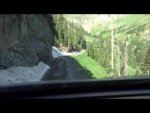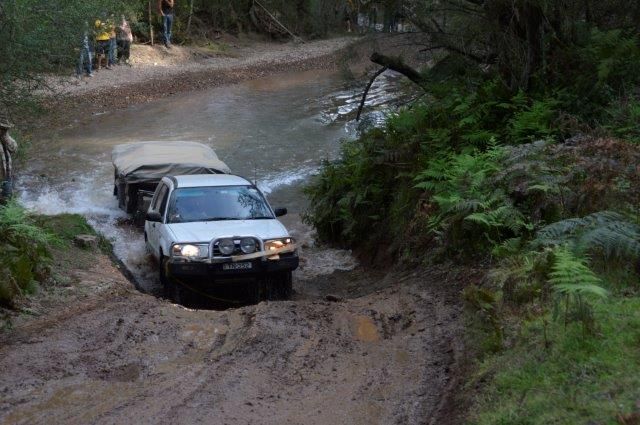Rally
Forum Member
To those who are set in their ways, do as you please. I doubt what I am going to say will sway your opinion. I make the following comments based on tens of thousands of kilometres of outback travel, and on terrain from gibber to rocky outcrop, mud, gravel and of course sealed road. Everything but sand and ice really.
I came to the conclusion after all those trips across the continent that to get a puncture, you really had to be unlucky. On one trip, we headed of down the Birdsville Track. It had just been re-opened following heavy rain. We were in 2WD vehicles and were the first vehicles to hit the track once it was re-opened. It was very muddy in places, especially the first half of it.Further on, my mate who was running all terrain tyres got a puncture. I was running road tyres, in this case 265/50's. I never got a puncture.
Of all the trips I did, from the Simpson, Sturts Stony, Tanami and other desers, and the Oodnadatta and Strzlecki Tracks, Buchanan "Hwy" (the West Australians have an evil sense of humour) and so many other tracks across the continent, I never got a sidewall puncture. Until I went to an all terrain tyre. Then I got a puncture on every single trip I did, without fail.
I came to the conclusion all terrain tyres are the most over rated thing you can get for your car. And while I have been stuck twice on my road tyres, my situation had nothing to do with tyres and everything to do with diffs. Yes, ultimately an all terrain tyre will hold a marginal advantage in off road traction, but nothing like the advantage the road tyre has over the A/T tyre on road. And even with a dedicated off road car, you still spend a far greater time on road than off. At least most people do.
So if there is minimal traction advantages, and punctures at best a lottery of luck (I am keeping L/T construction tyres out of this. They have issues of their own) at best, I would suggest spending money elsewhere on things that will make a real difference. I am. I'm spending money on getting a diff locker. I will only have to buy it once and unlike all terrain tyres, It won't adversely affect driving on road, and will do far more off road than an A/T tyre could ever hope to. Happy to do a side by side comparison after the car is back on the road with the new diff.
I came to the conclusion after all those trips across the continent that to get a puncture, you really had to be unlucky. On one trip, we headed of down the Birdsville Track. It had just been re-opened following heavy rain. We were in 2WD vehicles and were the first vehicles to hit the track once it was re-opened. It was very muddy in places, especially the first half of it.Further on, my mate who was running all terrain tyres got a puncture. I was running road tyres, in this case 265/50's. I never got a puncture.
Of all the trips I did, from the Simpson, Sturts Stony, Tanami and other desers, and the Oodnadatta and Strzlecki Tracks, Buchanan "Hwy" (the West Australians have an evil sense of humour) and so many other tracks across the continent, I never got a sidewall puncture. Until I went to an all terrain tyre. Then I got a puncture on every single trip I did, without fail.
I came to the conclusion all terrain tyres are the most over rated thing you can get for your car. And while I have been stuck twice on my road tyres, my situation had nothing to do with tyres and everything to do with diffs. Yes, ultimately an all terrain tyre will hold a marginal advantage in off road traction, but nothing like the advantage the road tyre has over the A/T tyre on road. And even with a dedicated off road car, you still spend a far greater time on road than off. At least most people do.
So if there is minimal traction advantages, and punctures at best a lottery of luck (I am keeping L/T construction tyres out of this. They have issues of their own) at best, I would suggest spending money elsewhere on things that will make a real difference. I am. I'm spending money on getting a diff locker. I will only have to buy it once and unlike all terrain tyres, It won't adversely affect driving on road, and will do far more off road than an A/T tyre could ever hope to. Happy to do a side by side comparison after the car is back on the road with the new diff.





